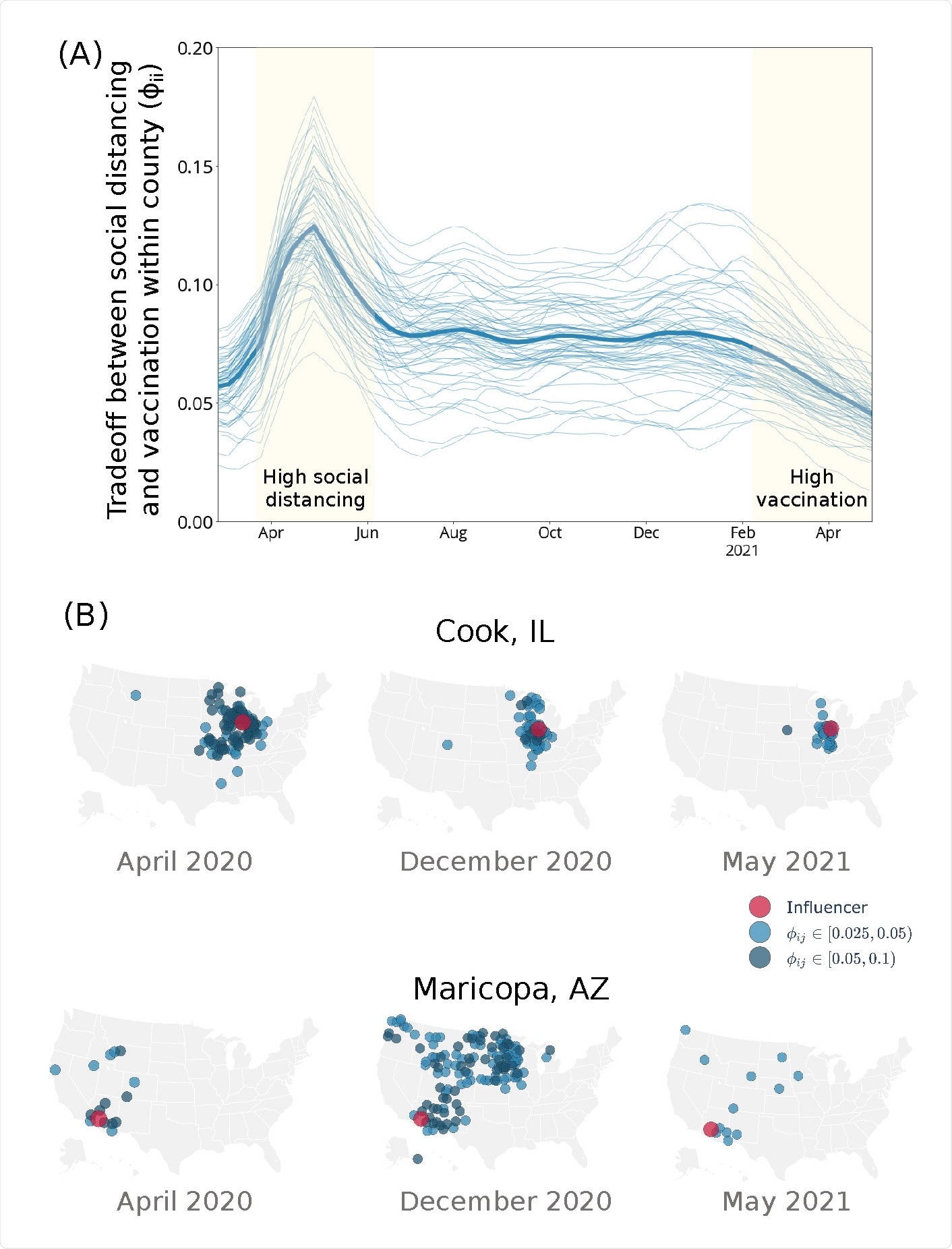Since the inception of the Coronavirus disease 2019 (COVID-19) pandemic, there has been significant variability in local response between USA states and the cities within them. In addition, there is also considerable variability within local regions based on other demographic factors, particularly socioeconomic status, with higher infection and mortality rates amongst the most impoverished communities.
The rollout of COVID-19 vaccines has significantly lessened infection and mortality rates. However, concerns regarding escape mutants that can evade the immunity induced by the currently available vaccines are growing. Perhaps, meaning non-pharmaceutical interventions such as lockdowns must continue to be implemented.
In a research paper recently uploaded to the medRxiv* preprint server, high-resolution contact data is utilized to characterize severe acute respiratory syndrome coronavirus 2 (SARS-CoV-2) transmission in the USA, considering infections' mobility and seasonality and vaccination status seroprevalence within the population.
Particular regions are identified as high risk by the group upon return to pre-lockdown behavior, highlighting the importance of continuous monitoring and case-by-case implementation of such measures.

 *Important notice: medRxiv publishes preliminary scientific reports that are not peer-reviewed and, therefore, should not be regarded as conclusive, guide clinical practice/health-related behavior, or treated as established information.
*Important notice: medRxiv publishes preliminary scientific reports that are not peer-reviewed and, therefore, should not be regarded as conclusive, guide clinical practice/health-related behavior, or treated as established information.
How was the study performed?
Data was collected from a wide range of sources for the study, with mobility estimated by app-based location data, contact rates by large-scale survey, vaccination through state records, and predicted seroprevalence from state and county-level data.
The research group found significant heterogeneity between locations, with the probability of any community having an outbreak of COVID-19 dependent on the non-pharmaceutical interventions implemented in that location and the implementation and compliance to measures set in neighboring communities. As lockdown measures are relaxed, the transmission rate of SARS-CoV-2 spikes and travel can also re-introduce the virus or novel variants.
The additional disparity in the distribution of vaccines further exacerbates heterogeneity amongst communities, and for this reason, the group compared the rates of inter- and intra-community transmission between regions. It was noted that some communities, such as Codington, South Dakota, have experienced very high COVID-19 rates, leaving almost a quarter of the population immune via prior infection. Though this community only had low vaccination rates of around one-third.
Other locations, such as Washington, Vermont, have vaccination rates of almost 70%, with only 2% developed immunity among the community. While these locations now bear similar rates of immunity, Washington, Vermont, experienced no deaths due to the route taken to achieve it.

Local and regional impact of public health interventions on transmission control.
How COVID-19 spreads across the USA
Urban locations were found to experience greater numbers of clusters of infections than rural locations, as would be expected due to the differing population density.
Importantly, it was noted that transmission between urban centers then drives broad distribution networks into surrounding rural locations.
When tracking these surges in transmission over the fall season, the group found that spikes initially occurred heterogeneously throughout the country, developing into several spatially distinct waves.
Therefore, the spread of a COVID-19 pandemic wave is more strongly driven by the connection between communities rather than the intensity of transmission in any particular location.
The research group suggests that considering local transmission is likely to underestimate the overall kinetics of epidemic growth, as each new urban center affected increases the national transmission rate in a non-linear manner.
The value of lockdown measures (number of contacts) was weighed against vaccination by the group statistically, noting that the value changes throughout the pandemic. For example, early in the pandemic, when lockdown measures were strict and vaccination rates low, the value of even harsher lockdown measures was more significant because even a minor reduction in the number of contacts would represent a substantial portion of the total number.
Later, as vaccination rates increased and lockdown measures relaxed, the value of social distancing measures decreased. Thus more extreme measures still would be needed to achieve the same effect. The group also concluded that areas with low vaccination rates should maintain social distancing measures even when the virus is present only at low levels, giving time to provide vaccines if an outbreak occurs.
Two scenarios of potential SARS-CoV-2 variants of concern were also modeled: one bearing double the transmission rate of wildtype (similarly to the more transmissible variants already developed); and the second representing a 25% increase in immune evasion against both vaccines and seropositive individuals.
The former leads to an average rise in the number of cases in most locations. At the same time, the latter causes the formation of multiple disconnected networks of virus transmission, in large part due to the vaccine heterogeneity between communities.
Overall the group predicted that an increase in the transmission is still likely to result in a greater number of new cases overall than an increase in immune evasion, as the current rates of immunity, by vaccination or past infection, still represent an insufficient portion of the population.
The future course of the COVID-19 pandemic is likely to be characterized by continuous movement, evolution, and reintroduction, with local populations with the lowest rates of immunity being at the highest risk.
Effective local case surveillance and tracking, along with the continuation of social distancing measures and distribution of vaccines, will be required in urban centers where outbreaks are driven.
Better global vaccine equity will reduce the future occurrence of reintroductions and the development of new highly transmissible variants of concern, as the pandemic is unlikely to end until the virus has been globally eradicated.

 *Important notice: medRxiv publishes preliminary scientific reports that are not peer-reviewed and, therefore, should not be regarded as conclusive, guide clinical practice/health-related behavior, or treated as established information.
*Important notice: medRxiv publishes preliminary scientific reports that are not peer-reviewed and, therefore, should not be regarded as conclusive, guide clinical practice/health-related behavior, or treated as established information.